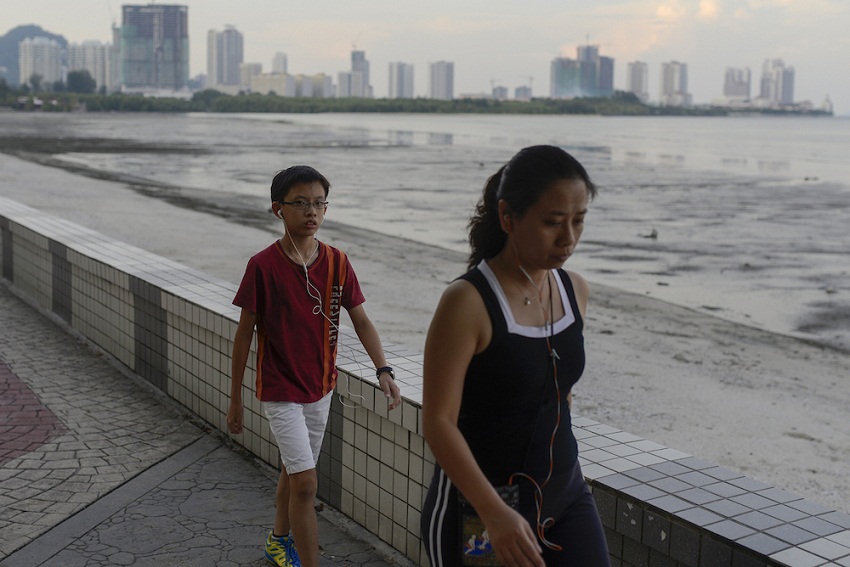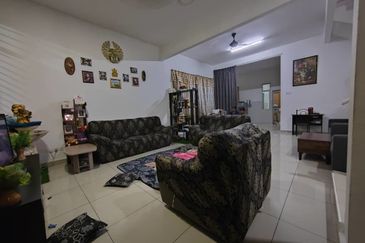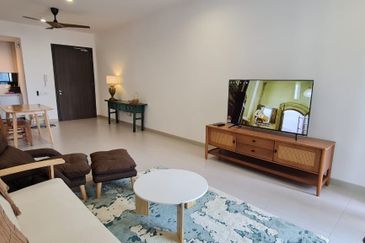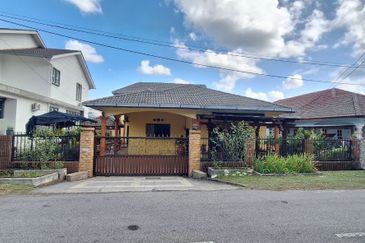
PENANG (Dec 7): Those who attended yesterday’s open session on the RM27 billion Penang Transport Master Plan were generally welcoming of the ambitious project.
They were, however, also concerned about the impact it could have on the homes and the environment.
The bulk of the questions raised were about the proposed master plan, which featured the construction of a light rail transit and monorail network and highways; and their alignments.
But some expressed fears that the solution to the state's traffic woes could come at the price of the environment, including the beaches and the village homes, because the plan involved the reclamation of the sea off Permatang Damar Laut south of Penang island.
Thousands of acres will be reclaimed to build two or three islands, which some fear will cost them their homes and the livelihoods of the local fishing community.
"I am from Gertak Sanggul and it is a harmonious, over a century old settlement by the sea. I am worried that a development like this will ruin the old villages and force the people out," said a woman, who identified herself as Miss Lim.
Another, who said his name was Ong, raised concerns about fisheries. "When they reclaimed land in Singapore, the reclamation killed the fish in the sea," he said.
Local government, traffic management and flood mitigation exco Chow Kon Yeow said effort would be made to execute the plan with minimal impact on residences and the environment.
He said some homes would be affected by the alignments of the highways and rail system but promised that the state government would make the necessary arrangements if there were residents to be relocated.
"The natural beaches will be preserved and there will be new manmade beaches too," he said during the session at the council town hall.
He said the preliminary plan for the reclaimed islands also included environmentally-friendly, public areas for the people, such as 5km of beach, a 25km coastal park, bike trails and 700 acres of green space.
Project manager and Gamuda executive director Szeto Wai Loong, who represented the masterplan's project delivery partner, SRS Consortium Sdn Bhd, said local residents and fishermen would be engaged to speak their thoughts and concerns on the master plan next.
He said reclamation had proved technically viable and the next step was to conduct a detailed environmental impact assessment (DEIA).
"There will be studies on maritime, current and social impact. We will be going around talking to the people in the area to hear their views and concerns to see how we can accommodate them," he said.
Penang Island City Councillor Dr Lim Mah Hui pointed out a discrepancy in the 030 population growth forecast.
He said Halcrow Consultants, one of the firms that prepared the masterplan, projected the Penang population to reach 2.5 million by then, but the Statistics Department had projected only 2 million.
He said the projected demand for transport should be carefully calculated and the project scaled down if the figure is found to be lower.
Mah Hui also told the state government that it should not look at the sea bed as a "bottomless pit", as land reclamation came with serious and irreversible consequences.
This, he said, was seen in the Seri Tanjung Pinang I (STP1) reclamation project in Tanjung Tokong, which was now blamed for siltation on the nearby Gurney Drive coast.
"If we reclaim, then we must do it responsibly," he said.
Mah Hui said he would also be cautious about building more roads in Penang, as that would increase the demand for private vehicles.
He said while promoting public transport, the state must also actively discourage people from using their own vehicles.
"We must have a policy that makes it expensive to use cars. If people want to drive in comfort, they should have to pay.
"If they want the Pan Island highway, it should not be given free. Users should be paying toll. I am sure people are not against toll, just cronyism.
"If the people have to pay toll to use the road, then perhaps we won't need so much land (to finance the project)," he said, referring to the land swap arrangement wherein the proposed manmade islands would be auctioned off to pay for the projects in the masterplan.
Yan Lee of civil group Penang Awareness Chant Group asked for more details about the Pan Island Expressway, which would be running through hills to connect Tanjung Tokong in the north and the Penang International Airport in the south.
He also asked whether there were still plans reclaim land from a natural seagrass bed called the Middle Bank, off the coast of Jelutong, for a rail link between the island and the mainland.
Szeto said the Pan Island link alignment was not final as surveys were still being done, but the expressway connection would be integrated.
He also assured the people that the proposed road would cut across the Penang Municipal Park (Youth Park) via a flyover and would not affect the green lung.
On the Middle Bank, he said after checking with Penang Port, it was decided that the location was not suitable for reclamation because the sea there was busy with ships.
"As a result, we had to look further south of the island," he said.
A blogger named Eric, who goes by the moniker Fire Dog online, said he supported the masterplan, adding that Penang should have introduced the LRT in the 1970s when it was becoming an industrialised state.
But he said he was concerned about where the sand for the reclamation would come from.
Szeto said the main source of sand was the sea between Penang and Perak, and not the hills of Penang.
At the end of the session, Chow assured the people that the projects would not take off without the approval of the federal authorities.
"If there is no approval, then it is no-go for the masterplan and also no payment for the project delivery partner.
"That will make this just an academic exercise in how to draw up a transport masterplan," he said.
Chief Minister Lim Guan Eng said the application had already been submitted to the federal authorities for their consideration.
He said even though it was early days yet, the state government wished to keep the people informed and find out what they think. -- The Malaysian Insider
Interested in investing in properties in Penang after reading this article? Click here.
TOP PICKS BY EDGEPROP

Taman Nusa Sentral
Iskandar Puteri (Nusajaya), Johor

Taman Bukit Indah @ Iskandar Puteri
Johor Bahru, Johor

Eco Botanic
Iskandar Puteri (Nusajaya), Johor

Astrea Residence (Residensi Astrea)
Mont Kiara, Kuala Lumpur

Menara HLX (formerly Menara HLA)
KL City Centre, Kuala Lumpur




















